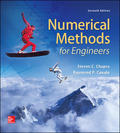
Concept explainers
Cancer cells grow exponentially with a doubling time of 20 h when they have an unlimited nutrient supply. However, as the cells start to form a solid spherical tumor without a blood supply, growth at the center of the tumor becomes limited, and eventually cells start to die.
(a) Exponential growth of cell number N can be expressed as shown, where
(b) Write an equation that will describe the rate of change of tumor volume during exponential growth given that the diameter of an individual cell is 20 microns.
(c) After a particular type of tumor exceeds 500 microns in diameter, the cells at the center of the tumor die (but continue to take up space in the tumor). Determine how long it will take for the tumor to exceed this critical size.
Want to see the full answer?
Check out a sample textbook solution
Chapter 1 Solutions
EBK NUMERICAL METHODS FOR ENGINEERS
Additional Engineering Textbook Solutions
Math in Our World
Thinking Mathematically (6th Edition)
Pathways To Math Literacy (looseleaf)
Elementary Statistics ( 3rd International Edition ) Isbn:9781260092561
Intermediate Algebra (13th Edition)
College Algebra (7th Edition)
- 7) Find an equation for the ellipse with foci at (0, ±7) and y-intercepts are +8.arrow_forward3) Find an equation for the parabola with a vertex at (1, 2) and focus at (1, 4). A) (x - 1)² = 8(y-2) C) (x - 1)² = -8(y - 2) B) (y - 2)² = -12(x − 1) - D) (y - 2)² = 12(x-1)arrow_forward2) Graph the equation. y² = 12x 5 10 -10 -5 5 + 10 xarrow_forward
- Algebra & Trigonometry with Analytic GeometryAlgebraISBN:9781133382119Author:SwokowskiPublisher:Cengage
 Linear Algebra: A Modern IntroductionAlgebraISBN:9781285463247Author:David PoolePublisher:Cengage Learning
Linear Algebra: A Modern IntroductionAlgebraISBN:9781285463247Author:David PoolePublisher:Cengage Learning

 College AlgebraAlgebraISBN:9781305115545Author:James Stewart, Lothar Redlin, Saleem WatsonPublisher:Cengage Learning
College AlgebraAlgebraISBN:9781305115545Author:James Stewart, Lothar Redlin, Saleem WatsonPublisher:Cengage Learning Algebra and Trigonometry (MindTap Course List)AlgebraISBN:9781305071742Author:James Stewart, Lothar Redlin, Saleem WatsonPublisher:Cengage Learning
Algebra and Trigonometry (MindTap Course List)AlgebraISBN:9781305071742Author:James Stewart, Lothar Redlin, Saleem WatsonPublisher:Cengage Learning





